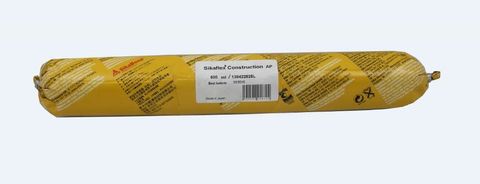
SIKAFLEX® CONSTRUCTION (AP) Black
Description
Sikaflex Construction (AP) is a one part, moisture curing, elastic joint sealant based on polyurethane. It is suitable for indoor and outdoor applications, in some cases without the need for priming of the substrate. It can be used for sealing joints in building construction such as movement and construction/isolation joints around window and door frames, facades, claddings and more. Sikaflex Construction AP offers a short skinning time, non-sag on vertical joints and excellent adhesion to many substrates.
Features:
Ideal for:
APPLICATION
Surface Preparation:
Substrate should be clean, sound, dry and free of oil, grease and surface contaminants such as form release agents, curing membranes and hydrophobic water repellents. Any loose particles or laitance should be removed with a rotary mechanical wire brush followed by blowing out with oil free compressed air. Use Sika cementitious or epoxy mortars for making good spalled or damaged joints. Refer to Sika primer selection guide for more information regarding priming.
Placement:
Slide unipac (sausage) into the special applicator gun, then either nick the unipac wrapper at the extrusion end or cut off the very end of the sausage if it contains partially cured lumpy Sikaflex. Fit the gun with a suitable nozzle that has been cut to deliver the right bead size. All primer on joint sides, which is generally applied after backer rods or release tapes are in place (refer joint design section) must have not exceeded its open time and it must be thoroughly dry and not just skinned over; otherwise in conditions of rising temperature trapped solvent can blow bubbles in the uncured sealant.
Porous substrates such as poorly compacted or cracked concrete must have their porous bond area surfaces thoroughly sealed to avoid the possibility of air bubbles being blown into the uncured sealant if the substrate temperature rises. Extrude the Sikaflex into the joint ensuring that no air is trapped in the joint. Wide joints will require more than one pass of the application gun to make sure that Sikaflex is in full contact with the sides and bottom of the joint.
Tooling-off the sealant will assist by forcing the sealant into the joint against its sides and back up material; this will also break any air bubbles and expose any air pockets. Final tooling of the joint surface can be done effectively with a spatula dipped in a 20% solution of washing up detergent in water (test to ensure it does not discolour the cured Sikaflex) or a profiled piece of raw potato. When tooling off with detergent solution, ensure no solution is allowed to get onto adjacent joint sides/bonding areas before the sealant has reached the final tooling stage in those locations.
When masking sides of joints for neatness, remove tape before the sealant cures. Always allow sufficient surface exposed to moisture.
Clean Up:
Use Sika Colma Cleaner to remove uncured sealant from tools after first removing the bulk of the Sikaflex material with a scraper followed by a rag or paper tissue. Sikaflex Hand Cleaner will remove fresh and partially cured Sikaflex from the skin. Hardened material can only be removed mechanically.
Storage:12 months from date of production if stored in undamaged original sealed containers, in dry conditions and protected from direct sunlight at moderate temperatures.
Yield:A 600ml sausage will give 24 linear metres of a 5 x 5mm joint, or 0.5 linear metres of a 40 x 30mm joint.
